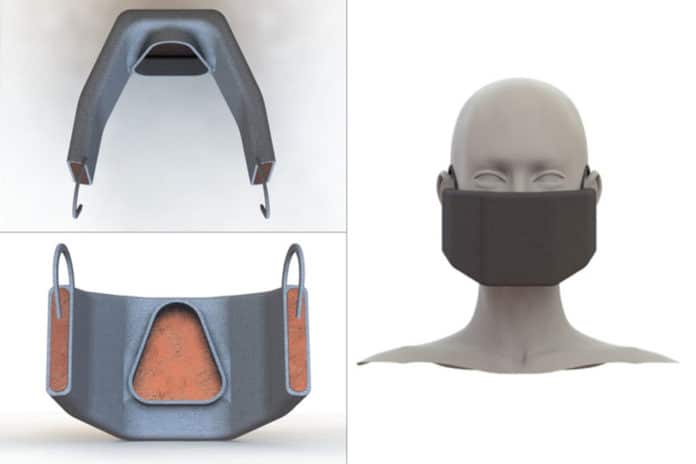Wearing a face mask is one of the prevention measures to limit the spread of coronavirus. It becomes mandatory to wear face masks to prevent onward transmission in the general population in public areas, particularly where distancing is not possible and in areas of community transmission.
Going a step forward, MIT scientists hope to create a mask that inactivates viruses using heat. They want to build a reusable mask embedded with a heated copper mesh.
The copper mesh is surrounded by neoprene, an insulating material that prevents the outside of the mask from becoming too hot to wear.
This mask’s idea is: As the person wearing the mask breathes in and out, air repeatedly flows across the mesh, and any viral particles in the air are slowed and inactivated by the mesh and high temperatures. Such a mask could be useful for health care professionals and public members in situations where social distancing would be challenging to achieve, such as a crowded bus.
The concept of this mask is entirely new. Instead of primarily block the virus, it allows the virus to go through the mask but slows and inactivates it.
Michael Strano, the Carbon P. Dubbs Professor of Chemical Engineering at MIT, said, “The masks that we wear now are designed to capture some of the viruses. They offer protection, but there’s no one thinking about inactivating the virus and sterilizing the air. That surprised me.”
Scientists set out to design a mask that would kill the virus using heat. They decided to use copper mesh as the heating and capture element. They performed some numerical demonstrating to decide the ideal temperature range they would need to kill coronaviruses flowing inward or outward from natural breathing.
Unlike other filtration masks that function by filtration, filtering particles by size, or electric charge, this new mask has a different mechanism. It works predominantly by thermal inactivation.
Scientists calculated how rapidly coronaviruses degrade at different temperatures. After trapping conditions, they found that a temperature of about 90 degrees Celsius could achieve between a thousandfold and millionfold reduction in viral particles, depending on the final mask size.
They also showed that that temperature could be achieved by running an electrical current across a 0.1-millimeter thick copper mesh or thermoelectric heater, powered by a small battery. The current prototypes include a 9-volt battery, which would provide enough power to heat the mask for a few hours and cool the air before it is inhaled.
Strano said, “N95 respirators, surgical masks, and cloth masks are effective and should be used during the pandemic as directed, but one potential advantage of heated masks is that because they kill the virus, they don’t need to be decontaminated or thrown away after use. Additionally, they may offer extra protection by eliminating the virus rather than only filtering it.”
“What we show is that it’s possible to wear something on your face that’s not too cumbersome, that can allow you to breathe medically sterile air. The prospect of being able to breathe in medically sterile air and breathe out medically sterile air, protecting the people around you, and protecting yourself, is just the next step. It’s better technology.”
The team has described the new concept and design in a paper that they posted to bioRxiv, an online preprint server, and they have also submitted the paper to a peer-reviewed journal.
Other authors include MIT graduate students Daniel Lundberg, Xinyao Liang, and Xiaojia Jin; undergraduate Rosalie Phillips; postdoc Dorsa Parviz; and Jacopo Buongiorno, the TEPCO Professor of Nuclear Science and Engineering at MIT.
